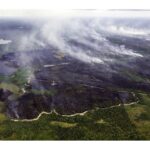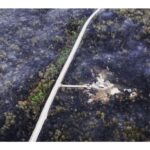Article contentWho is to blame?Article contentWhen the situation with wildfires got out of control, the government started to search for culprits. Blaming arsonists looked like an explanation. Arsonists are invisible. They are omnipresent, setting fire across the province. They have a malicious intent. It is enough to catch one or two and declare them scapegoats.Article contentFraming the situation with wildfires as a criminal act dictates a response. All that is needed is to increase the severity of fire bans and the penalty for those who dare to violate them. The government did precisely that. Violators of the Forest fire regulations now face a penalty ranging from $50,000 to one year in prison. Its severity has no precedent elsewhere in Canada.Article contentAs the Premier admitted, fines for similar violations of bans in other provinces, such as Nova Scotia, do not exceed $25,000. Harshening the penalty as a solution creates the Premier’s image of a “tough guy” (“we mean business”) and simultaneously removes the underlying issue from the wildfire science and political process domains. Initiating a “witch hunt,” the government relieved itself from any responsibility for the insufficient preparedness.Article contentArticle contentThe government was not fully ready for the known known. The situation with the provincial fleet of water bombers is a case in point. Concerns about the out-of-service state of a fifth waterbomber have been voiced for many years, at least since 2022.Article contentThe province brought outside foresters to help contain wildfires for the first time that year, as the late Derrick Bragg, the Minister of Fisheries, Forestry, and Agriculture in 2021-2023, acknowledged. A contract to repair the fifth waterbomber was awarded on 23 April 2025, but it was too late to add it to the fleet this season. The fifth water bomber would have greatly assisted in the early stages of wildfires.Article content A provincial government water bomber flies through smoke over route 60 in Holyrood as it makes water drop on a wildfire in the area. A section of Holyrood was evacuated Monday afternoon when fires spread and got too close to inhabited areas. Photo by Keith Gosse/The Telegram /THE TELEGRAMArticle contentThe government also chose a hands-off approach to the training program at Stephenville Aerodrome as another element of firefighter preparedness. As an excuse for viewing firefighter pilots’ training as a “private matter,” the government referred to the fact that the former airport is now privately owned.Article contentArticle contentAssets leased on short notice did not bridge the gap. Helicopters rented for $3.3 million per week cannot be operated at night. Only two of the four Quebec waterbombers that were expected joined the battle with fire.Article contentLessons unlearnedArticle contentFive years ago, the city of St. John’s was unprepared for another known known, a record-breaking snowstorm. The authorities did not have enough heavy equipment to avoid a total shutdown. The 2020 great snow crisis was human-made as much as a natural disaster.Article contentThe 2025 great fire crisis shows that the lessons have not been fully learned since then. The authorities are as unprepared to known knowns today as they were back in 2020. Known and unknown unknowns will make the situation even worse. Some natural disasters have never occurred in Newfoundland and Labrador thus far but can become possible as climate continues to change. It is a time to signal to the government that the lack of preparedness is unacceptable and consequential.Article contentDr. Anton Oleinik is a former professor at Memorial University. His areas of expertise include political sociology and political economy.Article content
OPINION: From the 2020 great snow crisis to the 2025 great fire crisis











